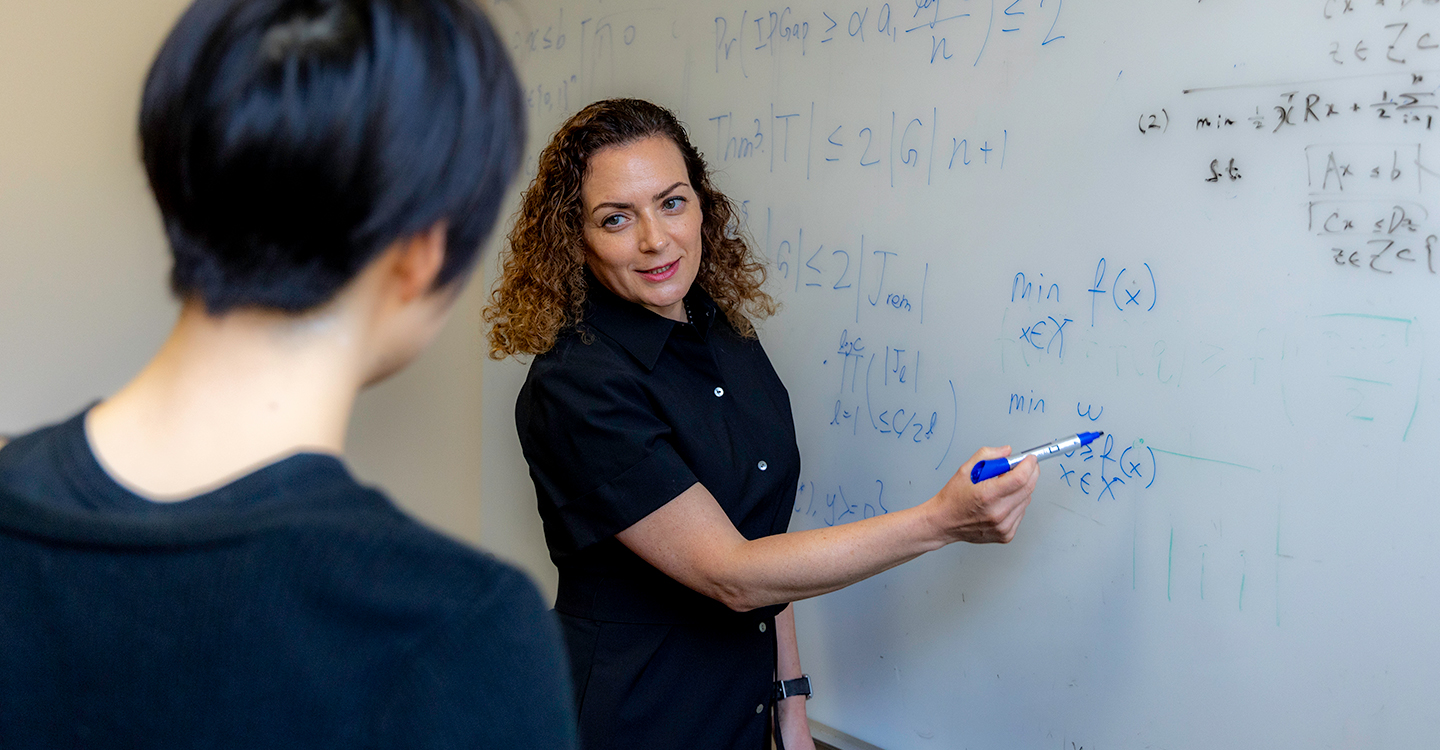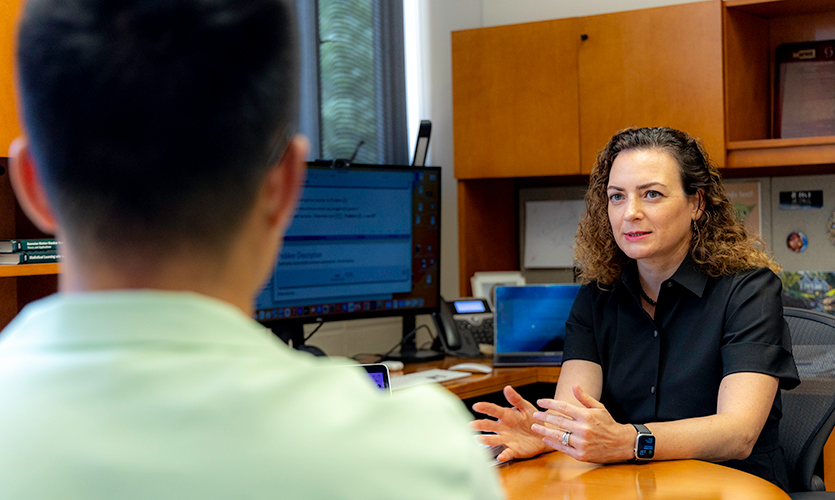On a Mission to Optimize Networks
Simge Küçükyavuz addresses dynamic network problems by combining data with custom-built computational models

Networks intrigue Simge Küçükyavuz. In fact, the more complex and dynamic the network, the more fascinating it is to the Northwestern Engineering researcher.
Every network is an interconnected labyrinth of nodes and arcs, said Küçükyavuz, professor of industrial engineering and management sciences at Northwestern Engineering. With air transportation, for instance, a node would be an airport with flight routes serving as the arcs enabling airline travel from one node to another. On social networks, individuals themselves represent the nodes while the arc is one user “following” another, which allows information to flow easily from person to person.
But here’s the rub: all networks are prone to problems that impede, if not upend, their operation. That’s the reality Küçükyavuz, an expert in large-scale and stochastic optimization, tackles with her spirited work to optimize the design and performance of large, complex, and dynamic networks.
Specifically, Küçükyavuz takes data and builds computational tools such as algorithms and mathematical models to inform decision making. This general approach is one she applies to a diverse assortment of domains with potential wide-ranging and significant implications from national security to the health of US democracy.
Supported by a grant from the Office of Naval Research (ONR), for example, Küçükyavuz is tackling the issue of social media misinformation, an accelerating global problem the World Economic Forum and others have cited as one of the main threats to well-functioning societies. Küçükyavuz is creating computational tools to minimize the spread of misinformation on social networks and provide digital enterprises with optimal intervention strategies, such as blocking a post or issuing a disclaimer, to quell the spread of misinformation.

With the same ONR grant, Küçükyavuz is also exploring ways to optimize water distribution networks, such as the reservoirs and pipes delivering water into homes and buildings. Working with data from the US Environmental Protection Agency, she is investigating the best possible placement of contaminant-detecting sensors to identify abnormalities as quickly as possible to minimize adverse health outcomes.
“We’re hedging against all possible scenarios to find the best possible place to position these sensors,” Küçükyavuz said.
Such network optimization problems are ubiquitous, said Küçükyavuz, the incoming chair of the Department of Industrial Engineering and Management Sciences. Beyond social networks and water safety, Küçükyavuz’s work also examines the optimization of smart buildings.
Using data from the University of California, Berkeley’s Intel lab, Küçükyavuz is developing computational tools to reduce energy use. If sensors detect a particular part of a building is unoccupied – and, therefore, not in need of light, heat, or cool air – Küçükyavuz said automated responses can make the necessary adjustments to conserve energy.
“The goal here is to design a network of sensors to get the most possible coverage in the building,” Küçükyavuz said.
We’re solving problems in seconds that would have previously taken years.
Küçükyavuz’s multi-faceted work characterizes the continued reimagining of industrial engineering’s underlying methods for contemporary challenges as well as the field’s fast-moving migration into new areas related to sustainability, equity, accessibility, and social good. The promise of her work is vast, from boosting the impact of machine learning to understanding the genetic differences of disease to predict the most effective treatment for individual patients, the latter effort something Küçükyavuz herself is addressing with a grant from the National Science Foundation.
Regardless of the application or the network, Küçükyavuz defines optimization as her foremost mission.
“You give me your data and I can present promising network designs and operations to inform your decision-making,” Küçükyavuz said.
And fast, she added.
“We’re solving problems in seconds that would have previously taken years.”